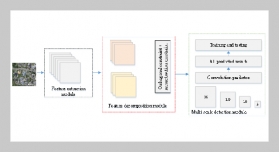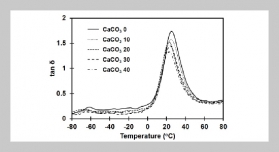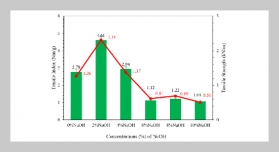REFERENCES
- [1] Codd, E. F., A relational model of data for large shared databases, Communication of ACM, Vol. 13, pp. 377� 387 (1970).
- [2] Dubois D. and Prade, H., “Possibility Theory: An Approach to Computerized Processing of Uncertainty”, Plenum Press, New York (1986).
- [3] Codd, E. F., “Extending the database relational model to capture more meaning,” ACM Transactions on Database Systems, Vol. 4, pp. 3977�434 (1979).
- [4] Lipski, W., “On Database with Incomplete Information,” Journal of ACM, Vol. 28, 41�70 (1981).
- [5] Lipski, W., “On Semantic Issues Connected with Incomplete Information Databases,” ACM Transactions on Database Systems, Vol. 3, pp. 262�296 (1981).
- [6] Reiter, R., “Towards a Logical Reconstruction of Relational Database Theory”, En Brodie M., Mylopoulos J. and Schmidt J. W. On Conceptual Modeling, pp. 193�238, Springer Verlag Berlin, Network (1984).
- [7] Imielinski, T. and Lipski, W., “Incomplete information in relational databases,” Journal of ACM, Vol. 31, pp. 761�791 (1984).
- [8] Liu, K. C. and Sunderraman, R., “A generalized relational model for indefinite and maybe information,” IEEE Transactions on Knowledge and Data Engineering, Vol. 3, pp. 65�77 (1991).
- [9] Liu, K. C. and Sunderraman, R., “Indefinite and Maybe Information in Relational Databases,” ACM Transactions on Database Systems, Vol. 15, pp. 1�39 (1990).
- [10] Zadeh, L. A., “Fuzzy Sets as a Basis for Theory of Possibility,” Fuzzy Sets and Systems, Vol. 1, pp. 3�28 (1978).
- [11] Zadeh, L. A., “PRUF - A Meaning Representation Language for Natural Language,” International Journal of Man-Machine Studies, Vol. 10, pp. 395�460 (1978).
- [12] Chiang, D. A. Louis, R. C. and Hsieh, N. C., “Fuzzy Information in Fuzzy relational Database,” Fuzzy Sets and System Vol. 92, pp. 1�20 (1997).
- [13] Pons, O., Cubero, J. C., Medina, J. M. and Vila, M. A., “Dealing with Disjunctive and Missing Information in Logic Fuzzy Databases,” Int. J. Uncertainty, Fuzziness and Knowledge-Based Systems Vol. 4, 177�201 (1996).
- [14] Luca, De and Termini, S., “A Definition of a Nonprobabilistic Entropy in the Setting of Fuzzy Set Theory,” Information and Control Vol. 20, pp. 301�312 (1972).
- [15] Imielinski, T. and Vadaparty, K. ,“Complexity of Query Processing in Databases with Or-objects,” Proceedings 8th ACM SIGACT-SIGMOD symposium on principles of Database Systems (1989).
- [16] Yager, R., “On the Measure of Fuzziness and Negation Part I: Membership in the Unit Interval,” Inter. J. Gen. Syst. Vol. 5, pp. 221�229 (1979).
- [17] Buckles, B. P. and Petry, F. E., “Informationtheoretical Characterization of Fuzzy Relational Databases,” IEEE Trans. on SMC. Vol. 13, pp. 72�77 (1983).
- [18] Hsieh, N. C., Chiang, D. A. and Chiang, Rick C. T., “Measuring the quality of Queries in the Fuzzy Relational Databases,” International Journal of Intelligent Systems, Vol. 16, Issue 2, 2001.
- [19] Buckles, B. P. and Petry, F. E., “A Fuzzy Representation of Data for Relational Database,” Fuzzy Sets and Systems, 7, Vol. 3, pp. 213�226 (1982).
- [20] Raju, K. V. S. V. N. and Majumdar, A. K., “Fuzzy Functional Dependencies and Lossless Join Decomposition of Fuzzy Relational Database Systems,” ACM Transactions on Database Systems, Vol. 13, pp. 129� 166 (1988).
- [21] Shenoi, S. and Melton, A., “An extended Version of the Fuzzy Relational Database Model,” Information Science Vol. 52, pp. 35�52 (1990).
- [22] Zadeh, L. A., Sets, Fuzzy., Belzer, In J., Holzman, A. and Kenit, A. Eds., “Encyclopedia of Computer Science and Technology,” Mareel Dekker, New York, Vol. 8, pp. 325�351 (1977).
- [23] Keller, A. M. and Wilkins, M. W., “On the Use of an Extended Relational Model to Handle Changing Incomplete Information,” IEEE TOSE, Vol. 7 (1985).
- [24] Vila, M. A., Cubero, J. C., Medina, J. M. and Pons, O., “On the Use of Logical Definition of Fuzzy Relational Databases,” IEEE Conf. on Fuzzy Set (1993).
- [25] Zemankova, M. and Kandel, A., “Implementing Imprecise in Information Systems,” Information Sciences, Vol. 37, pp. 107�141 (1985).
- [26] Saxena, and Tyagi, B. K., “Fuzzy Functional Dependencies And Independencies In Extended Fuzzy Relational Database Model,” Fuzzy Sets and Systems, Vol. 69, pp. 65�89 (1995).
- [27] Yazici, A., Buckles, E., Gocmen, B. P., George, R. and Petry, F. E., “An Integrity Constraint for a Fuzzy Relational Databases,” IEEE conference on fuzzy systems, pp. 496�499 (1993).









